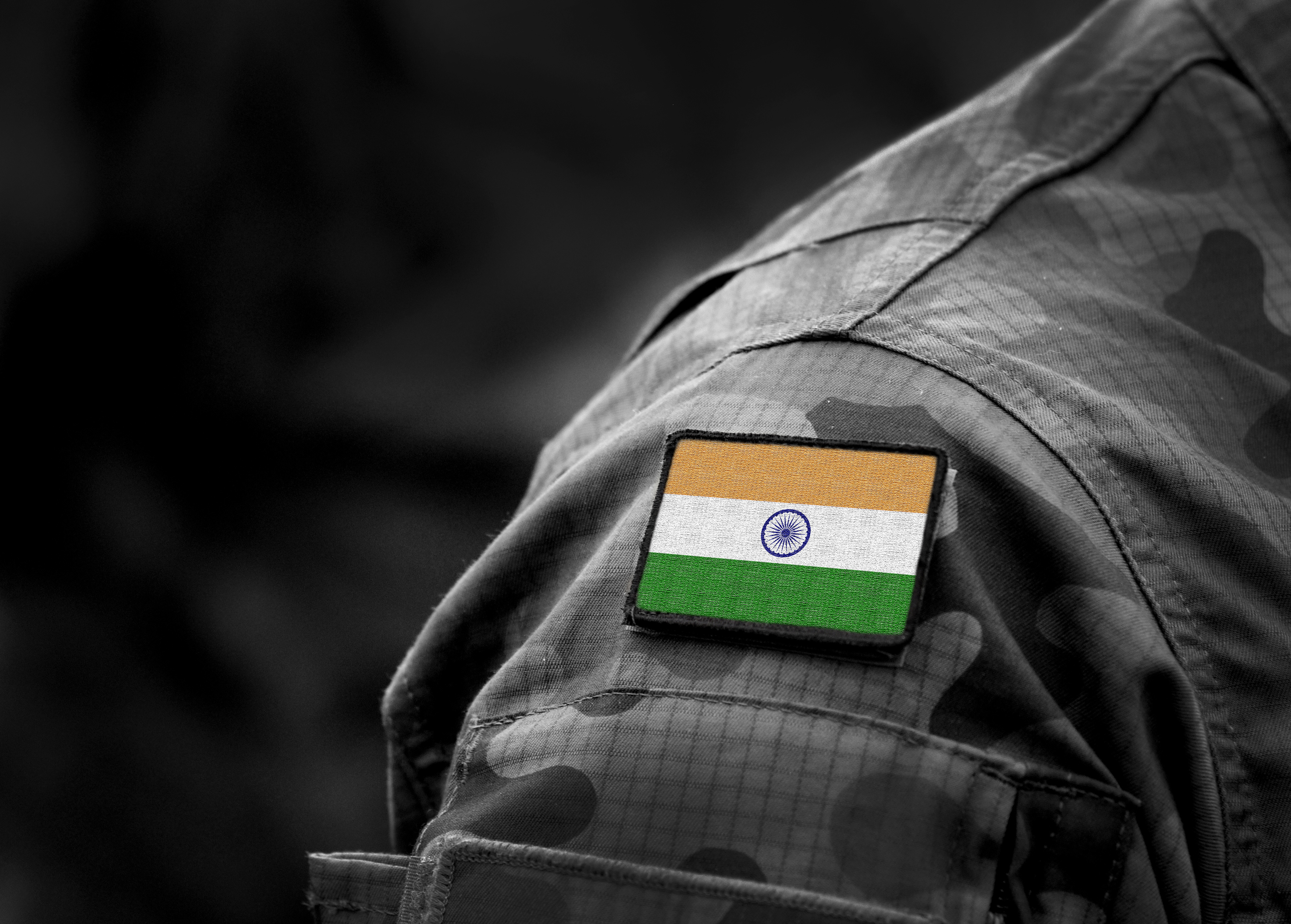
"India produces only 50% of the weapons it consumes and the rest of the weapons are imported. It makes India the second largest arms importer in the world."
Although India's defence expenditure is growing year-on-year, its 2019 budget was a modest $ 61 billion compared to $ 261 billion spent by China. This budget deficit challenges and concerns India's combat readiness in high conflict regions, including Sino-Indian border. Having less weapons is certainly a problem moreover if they are in poor functional state then it can be a tragedy for India.
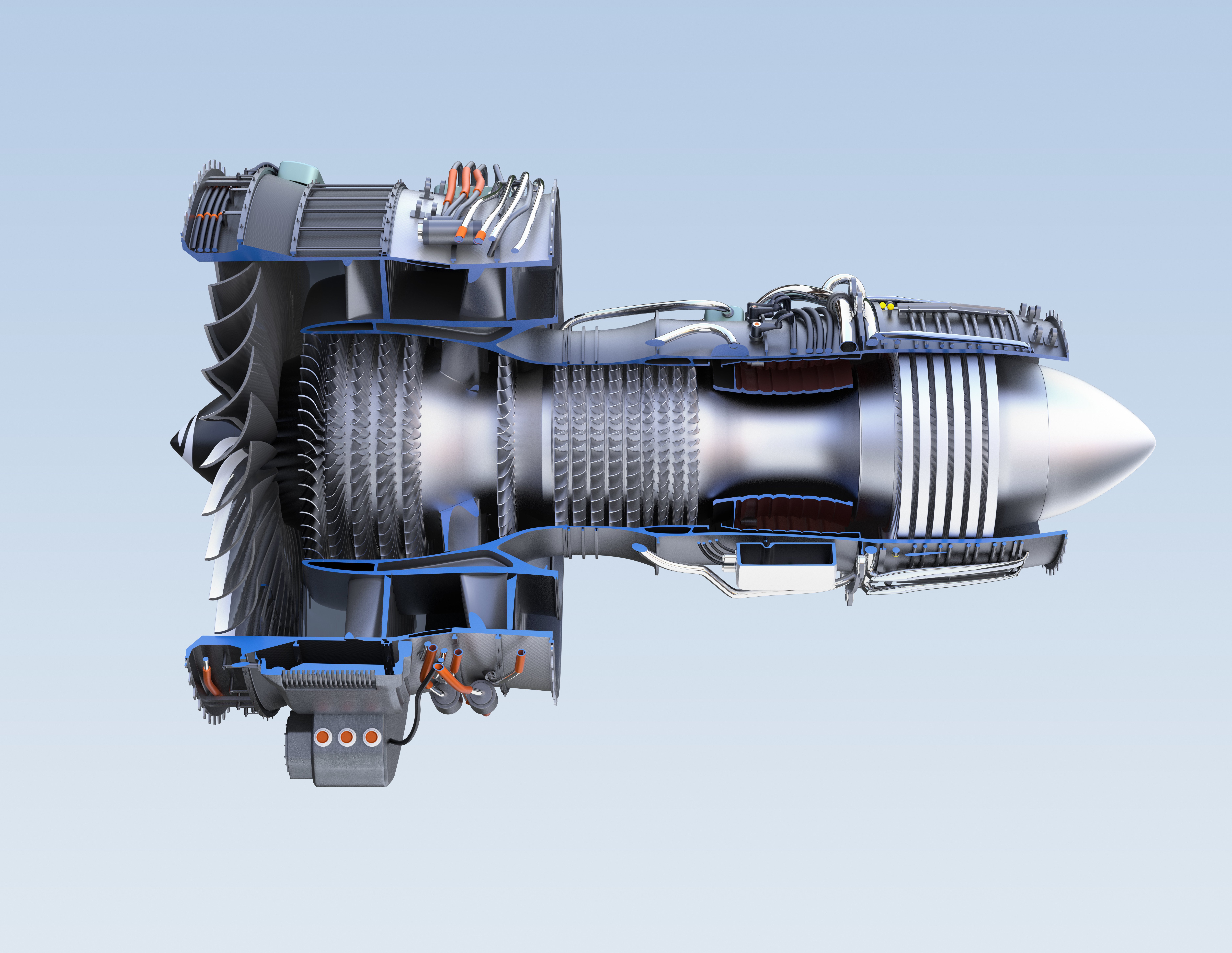
Turbofan Jet Engine
We know that Tribology can improve the functional state of weapons. Tribology enabled wear resistant materials when embedded into a machine components can reduce its power consumption and increase the service life of components.
"To learn how tribology is applied in Indian Air Force we have interviewed Dr. Harish Barshilia, a project leader and chief scientist from Surface Engineering Division at National Aerospace Limited (NAL)."
NAL has a long history of cooperation with Indian defence. Currently, it is focused on development of new technologies, that will reduce time and costs for design, prototyping production and repair of aerospace systems. Case in point, is the GTMAP (gas turbine materials and processes) national initiative from Indian defence with the objective to enhance expertise in materials and manufacturing to enable development of gas turbine technologies for Indian Air Force.
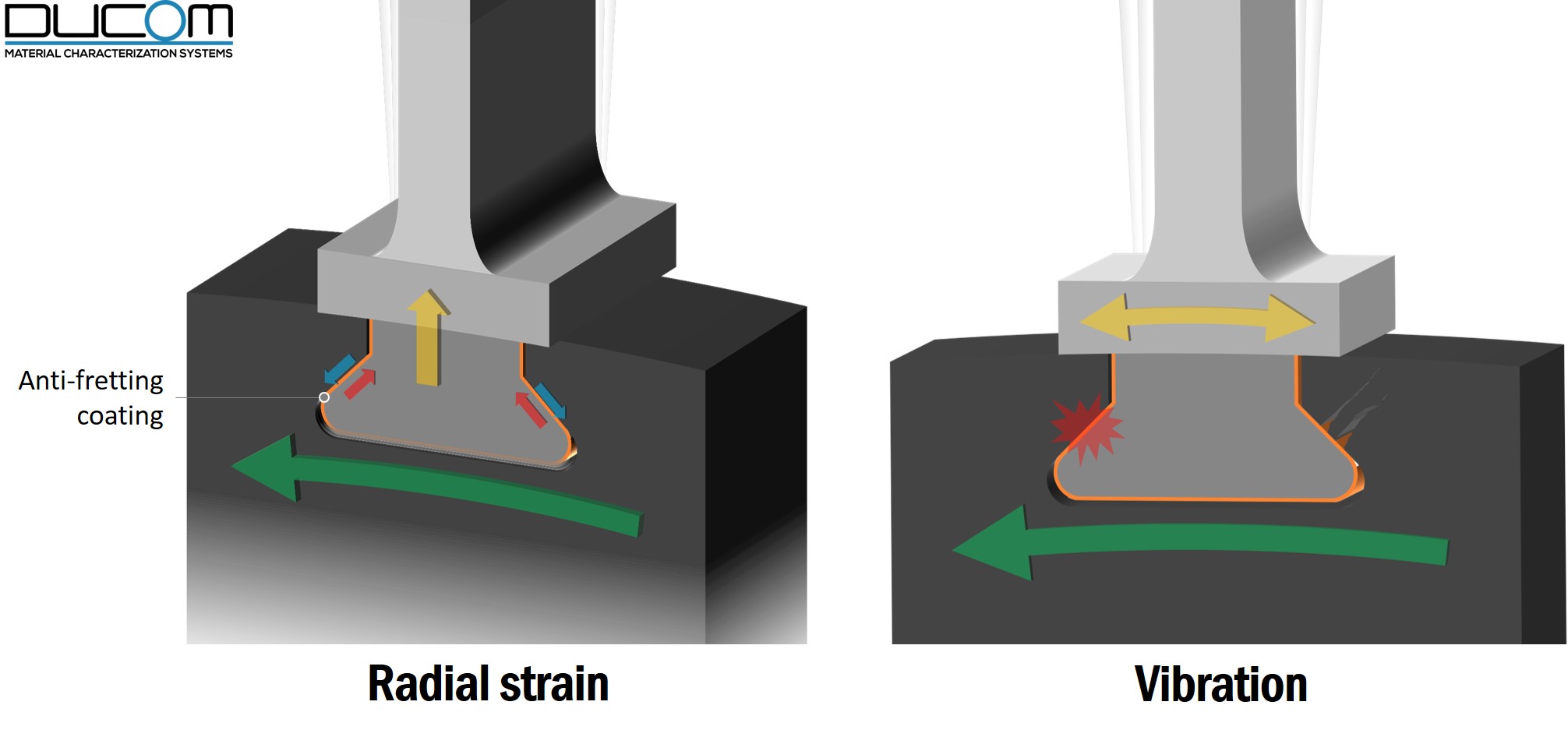 Fretting wear of turbine blades due to radial strain and vibration
Fretting wear of turbine blades due to radial strain and vibration
An emerging program in GTMAP is the development and deployment of hard face coatings to improve functional state of gas turbines. These coatings are intended to withstand severe erosion and fretting in the compressor and high pressure turbine sections of an engine. A brief description of this work is shared in this interview transcript below.
 Dr. Harish Barshilia is a Chief Scientist and Head, Surface Engineering Division, National Aerospace Labs.
Dr. Harish Barshilia is a Chief Scientist and Head, Surface Engineering Division, National Aerospace Labs.
He has 20+ years of experience in Nanoscience and Nanotechnology, Solar Energy, Surface Engineering, Optical Coatings, Stealth Coatings, 1-D & 2-D Materials and PVD Coatings. He has authored more than 20 patents that are considered significant by Indian Defence.
Q1) Why is erosion resistance in gas turbines a big concern?
Harish Barshilia: Solid particle erosion (SPE) by air borne particles such as dust, sand and fly ashes cannot be avoided. Ingestion and impact damages components such as stator vanes or rotor blades. Surface finish is important for aerodynamic efficiency. Erosion deteriorates the surface profile leading to low engine power, compressor stalls and in extreme cases blade failures.
"Reports indicate that US military savings amount to approx. $ 1 billion over 10 years by improving erosion resistance with cost savings coming from less maintenance visits, more Time-on-Wing and decreased fuel consumption."
Q2) What are the innovative solutions developed at NAL to address poor erosion resistance?
Harish Barshilia: The ideal coating should de-centralize the stress injected by the erodent, and it should also arrest the crack propagation and delamination of the coating. Single phase coatings like TiN, TiAlN, etc. show excellent erosion resistance for glancing incidence but exhibit poor erosion resistance at normal incidence angles due to low toughness and high stress. In order to rectify these problems, second generation coatings were developed with suitable combination of hard (ceramic) and soft (metallic) multilayered design.
"NAL has developed highly adherent erosion-corrosion resistant Ti/TiN and TiAl/TiAlN nanolayered coatings with stress absorbing layers on various aerospace alloy substrates."
We have made ultra-thin (3 to 4 nm) metal/ceramic bilayers with ultra-small grain sizes. This introduces a large number of interfaces for energy dissipation and balances hardness with ductility. Furthermore, extremely smooth as–deposited coatings (surface roughness, Ra = 35 nm) using magnetron sputtering ensured that the aerodynamic properties remain unaffected. Thin coating < 10 microns (adds only 5 mg/cm2 mass to the compressor blade) ensured minimal mass penalty.
Q3) How were these coatings evaluated?
Harish Barshilia: The coated substrates show significant improvement in the erosion performance, as tested in Ducom Air Jet Erosion Tester following ASTM G76 standard parameters at 400°C. The erosion tester offered flexibility of different impingement angles (from 15 degree to 90 degree) and speeds (from 30 to 150 m/sec) and temperatures (up to 1000 deg C) which was valuable to map erosion characteristics over a broad envelope relevant for the compressor blades. We were also able to validate some of the mechanisms of erosion as a function of impingement angle. These are described in details in our recent publications [Ref 1,2,3].
"We have successfully transferred the coupon level optimized coatings into actual components which are undergoing tests."
The erosion resistance of the optimized Ti/TiN coating was 74, 13 and 12 times higher than the bare Ti6Al4V substrate for the erodent speeds 30, 60 and 100 m/s, respectively. The erosion resistance performance of the optimized films was unaltered after 100 h annealing in air at 400⁰C. Corrosion resistance performance of Ti/TiN coating was 10 times better than the Ti6Al4V substrate in 3.5% NaCl solution. We were able to identify the coatings which offered best erosion resistance.
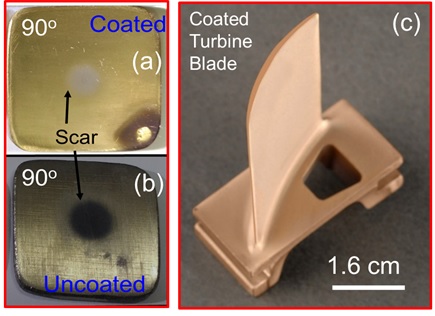 Selection of erosion resistant material in the lab (at coupon level) using Ducom Air Jet Erosion Tester and its deployment on to a turbine blade for testing in the field (component level).
Selection of erosion resistant material in the lab (at coupon level) using Ducom Air Jet Erosion Tester and its deployment on to a turbine blade for testing in the field (component level).
" Erosion tests by Ducom Air Jet Erosion Tester helped us to easily screen materials that could be quickly deployed at the component level"
Q4. What other challenges and gaps do you foresee for gas turbine materials development ?
Harish Barshilia: Even though, Ti based alloys and Ni based superalloys have been traditionally used for the gas turbine applications, ceramic matrix composite might be the future because of significantly higher temperature stability (upto 400 deg F). The manufacturing capability of these materials still needs a lot of improvements. At CSIR-NAL there are significant programs in materials and process developments related to SiC-SiC composites.
"Testing of materials for erosion-corrosion at high temperature needs substantial advances in instrumentation."
In the case of fighter jets, seawater environment introduces both erosion and corrosion induced deterioration. For the high pressure turbine, corrosion is related to the combustion products. Though we tested coatings upto 100 m/sec, instrumentation capabilities should allow test speeds of 300-400 m/sec.
References
Contact us for more information. Our experts are just a click away.
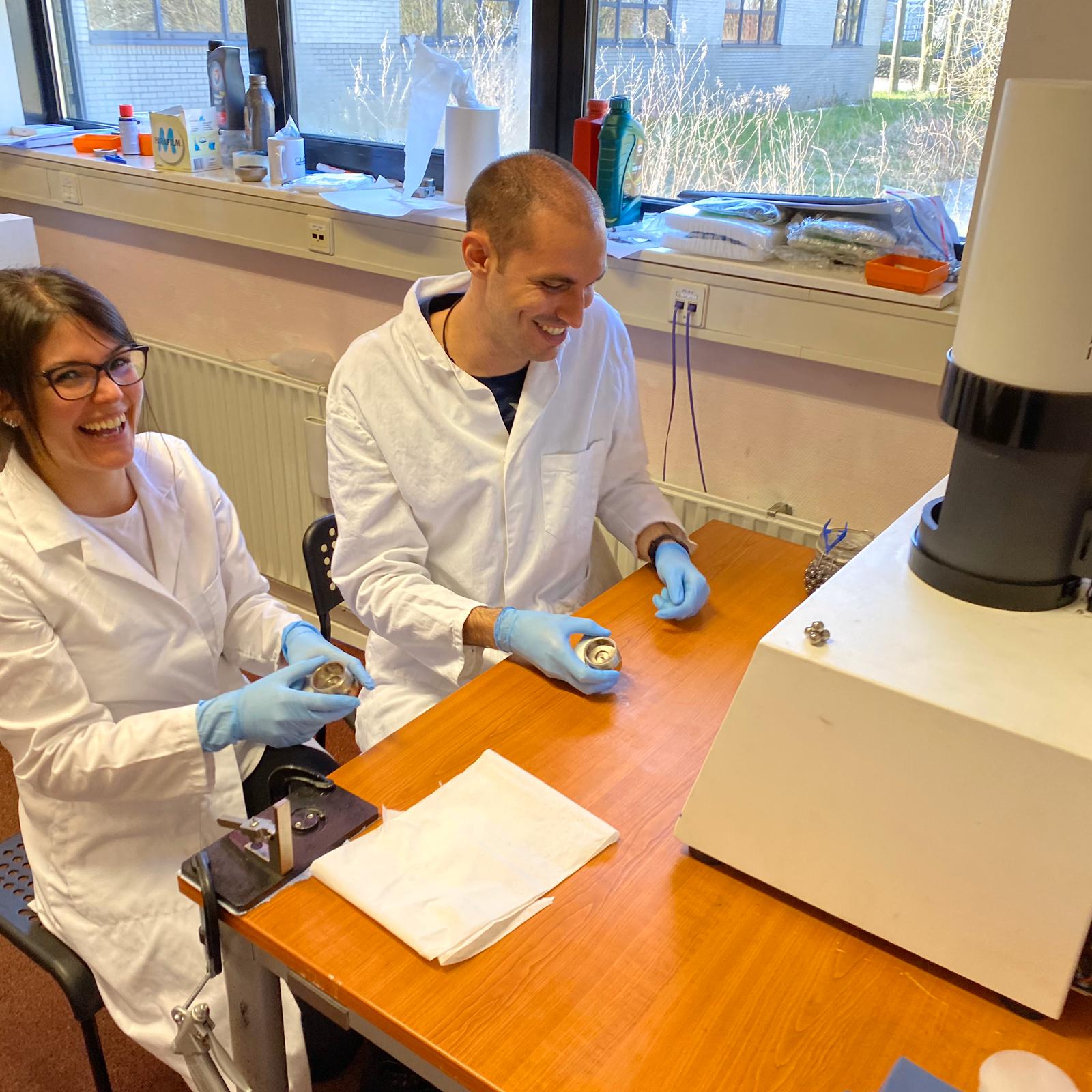
These Stories on Erosion
USA: +1 (847) 737-1590
India: +91 (80) 4080-5555
Netherlands: +31 (85) 065 74 10